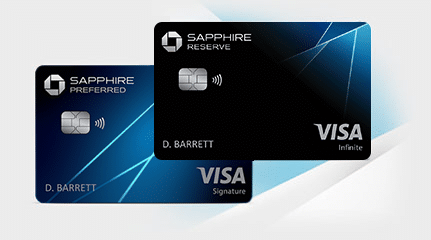Anúncios
Contactless payments are changing how we buy things because they’re so easy to use. Now, over half of Americans prefer tapping to pay for stuff. This method uses NFC tech to make buying things fast and safe. It’s why both shoppers and stores are big fans. In this guide, we’ll look at why contactless payments are great. We’ll also show you how to start using them yourself.

Chase Sapphire Preferred® Card

What Are Contactless Payments?
Contactless payments let you buy things without touching a terminal. They speed up checkouts, making shopping smoother in many places.
Anúncios
Definition and Overview
Contactless payments use modern technology for faster transactions. No need to swipe cards or use cash. It’s good for shoppers and businesses.
Anúncios
Common Types of Contactless Payments
There are several contactless payment methods:
- Tap-to-pay cards: Many credit and debit cards now let you tap on a reader for payment.
- Mobile wallets: Apps like Apple Pay and Google Pay are popular for contactless payments using mobile devices.
- QR codes: Shoppers can scan a merchant’s code to pay, blending digital technology with shopping.
How Contactless Payments Work
Contactless payments use NFC or Near Field Communication. This lets devices talk when they’re close. A simple tap starts a purchase, perfect for fast buys at places like restaurants. The tech keeps transactions safe, building trust in contactless payments.

The Technology Behind Contactless Payments
NFC technology supports contactless payment technology. It lets devices close to each other communicate safely and quickly. Instead of swiping a card or typing a PIN, users can pay by tapping their card or phone. This makes buying things faster and marks a big step in how we make transactions.
Understanding NFC Technology
NFC technology creates a radio frequency link between devices that are close. This way, they can share information safely, which is perfect for paying without cash. This technology is behind contactless payments, helping avoid the need to handle cash or cards. It makes payments faster and more secure.
Comparison With Other Payment Methods
When comparing payment methods, contactless payments have clear benefits over the old cash and card ways. Here are some key differences:
- Speed: NFC technology makes transactions very fast.
- Convenience: Just tap your device and you’re all set, no need for cash or card hassles.
- Reduced Risk: Less cash handling means a lower chance of losing money or being robbed.
Benefits of Using Contactless Payments
Contactless payments make buying things easier and safer for everyone. They bring benefits like quick convenience, better security, faster checkouts, and cleaner transactions.
Convenience in Daily Transactions
Contactless payments save you time. They let you pay quickly at shops, restaurants, and online. No more digging for cash or cards.
Speeding Up the Checkout Process
They really speed up paying. Just wave your card or device over a reader, and you’re done. It makes shopping faster, which is good for businesses and shoppers alike.
Enhanced Security Measures
Security is key with these payments. They use tokenization to keep your info safe. This means less chance of fraud and more peace of mind.
Improved Hygiene and Health Safety
With health concerns today, staying clean is important. Contactless payments mean less touching. This keeps both shoppers and stores safer.
Is Tap-to-Pay Safe?
As tap-to-pay gets more popular, people are asking if it’s safe. This convenient payment method does have strong safety features. These include protecting your personal info.
Safety Features of Contactless Payments
Contactless payments use high-tech safety measures. Here are the key ones:
- Encryption: To keep data safe, it’s scrambled so others can’t read it.
- Tokenization: Instead of your real card number, a unique token is used. It keeps your details private.
- User Authentication: Systems might ask for a fingerprint or a PIN. This confirms it’s really you buying something.
Thanks to these steps, tap-to-pay is pretty safe for buyers.
What to Know About Data Privacy
Even with strong security, there are still data privacy concerns. Keep these points in mind:
- Unauthorized people could get into devices holding your payment info.
- Make sure your mobile devices are up to date. Use hard-to-guess passwords.
- Be careful about what personal data payment apps can access.
Keeping up with this info helps protect your privacy when you pay contactless.
How to Set Up Contactless Payments
Contactless payments make buying and selling smoother for everyone. For individuals, it’s easy to get started with your phone. Stores wanting to take these payments have to set up their equipment right.
Setting Up for Mobile Devices
Starting with contactless payments on your phone? Download an app like Apple Wallet or Google Pay. Here’s how:
- Open the app and go to add cards.
- Type in your card info or scan it with your phone.
- Confirm your identity when asked, maybe through a text or email.
- After that, you’re all set for contactless buys.
Configuring Contactless Payment Terminals for Businesses
For companies, getting terminals ready for contactless payments is key. Stick to these steps:
- Make sure your devices can handle NFC technology.
- Log into your payment system to update software if needed.
- Talk to your payment provider about setting everything up.
- Try different contactless methods to confirm they work.
How to Use Contactless Payments with iPhones
iPhone contactless payments make buying things easy and fast. When you have Apple Pay, your shopping becomes smooth. Just add your cards once, and you’re good to go for payments with your iPhone.
Steps to Add Cards in Apple Wallet
First, open the Wallet app on your iPhone. Hit the ‘+’ to start adding a card. You’ll need to type in your card details and follow the steps on your screen. Your bank might check who you are before your card gets added.
Making Payments with Apple Pay
With your card ready, paying is simple. Just bring your iPhone close to a payment terminal that works with it. Use Face ID or Touch ID, depending on your iPhone, to confirm it’s you. This quick and easy method is why lots of people love using Apple Pay.
How to Use Contactless Payments with Android Devices
Android devices let you pay without using cash or cards through Android contactless payments. Users should set up Google Pay and know how to use it. Doing so makes paying with Android easy and satisfying.
Setting Up Google Pay
First, you need to get Google Pay working on your Android. Here’s how to set it up:
- Download the Google Pay app from the Google Play Store.
- Open the app and sign in with a Google account.
- Add your preferred payment method, such as a credit or debit card.
- Verify your payment information through your bank for security.
- Enable NFC (Near Field Communication) in your device settings if not already active.
Making Payments with Android Pay
To pay with Android, just follow these steps once Google Pay is set up:
- Unlock your Android device.
- Hold the device near the contactless payment terminal.
- Wait for a confirmation on your screen, indicating the payment was successful.
Advantages for Small Businesses
Small businesses gain a lot by using contactless payment systems. These systems make shopping better for customers and help businesses grow and work more efficiently.
Boosting Sales and Customer Satisfaction
When customers can pay fast, they tend to come back. They like the ease of contactless payments. This makes sales go up since many people want quick and easy buying options.
Reducing Cash Handling Risks
Using contactless payments means dealing with less cash. This helps avoid theft, mistakes, and reporting errors. Businesses can focus on being more secure and financially stable with digital payments.
Financial Efficiency With Contactless Payments
These systems make business operations smoother and cut costs on cash management. By saving time on handling cash, small businesses can focus more on growing and being productive. This leads to more profits and better efficiency.
Integrating Contactless Payments into Your Business
More and more, people want easy and safe ways to pay. Adding contactless payments boosts your business’s transaction skills. Two good ways are QR code payments and payment links for bills. These make paying faster and easier, giving your customers many options for transactions.
Accepting Payments via QR Codes
QR codes make transactions smoother for businesses. They create a unique QR for each buy. Customers just scan it with their phones to pay right away. This method is great because:
- Fast and efficient transactions
- Minimized physical contact during payments
- Cost-effective implementation
Using Payment Links for Invoices
Payment links modernize how businesses send bills to customer devices. Customers can pay online easily through these links, avoiding checks or cash. The main perks of using payment links are:
- Immediate payment processing
- Enhanced cash flow for your business
- Flexibility for customers in choosing payment methods
Best Practices for Implementing Contactless Payments
To get the most out of contactless payments, focus on teaching staff and customers. By adopting contactless payment best practices, the payment process becomes quick and safe.
Educating Staff and Customers
Training your team well makes them ready to help customers. They should know how contactless payments work and their benefits. Holding training sessions regularly helps staff answer questions confidently, making customers more at ease.
- Implement training on different payment methods.
- Simulate payment scenarios for practice.
- Utilize resources like videos or brochures for quick reference.
Providing Clear Payment Options to Customers
Clear signs explaining how to use contactless payments are essential. They should show how to tap or wave devices. By making sure customers know what to do, businesses can reduce confusion at checkout.
- Place signs near payment terminals with simple instructions.
- Offer on-the-spot demonstrations to interested customers.
- Encourage feedback to improve the payment experience.
Common Concerns and Misconceptions
Contactless payments are very popular today. But, some people still worry about their safety and the costs they might bring. By learning more about these issues, we can build trust in this technology.
Addressing Security Concerns
Many think contactless payments are risky. They fear their information could be easily stolen. But, these payments are quite safe because they use strong encryption and tokenization.
Every payment makes a new code. This means it’s really hard for thieves to grab your info.
Understanding Fees Associated with Contactless Payments
There’s a lot of confusion about the fees for contactless payments. Most people don’t pay extra to use them. Yet, companies should check if their payment processors charge any fees.
Knowing about these fees means both companies and customers can plan their budgets better.
Conclusion
Contactless payments are gaining ground in our fast-moving digital world. They bring quick transactions, better security, and cleaner exchanges. This makes them appealing for shoppers and businesses alike.
The smooth way these payments fit into our lives could make old cash methods rare. As more businesses pick up this tech, its benefits will grow. Companies using it can make their customers happier and handle money better.
We’re stepping into a time where paying without touching is common. It makes buying things simpler and is changing how we deal with money. For anyone, learning and using this tech is a smart move.
FAQ
What are the main benefits of using contactless payments?
How do contactless payment systems ensure security?
Can I use contactless payments with all merchants?
How do I set up contactless payments on my phone?
Are there fees associated with using contactless payments?
Is it safe to use mobile wallets for contactless transactions?
What should I do if my contactless payment card is lost or stolen?
Can small businesses benefit from accepting contactless payments?
What security measures should businesses implement for accepting contactless payments?
Conteúdo criado com auxílio de Inteligência Artificial


